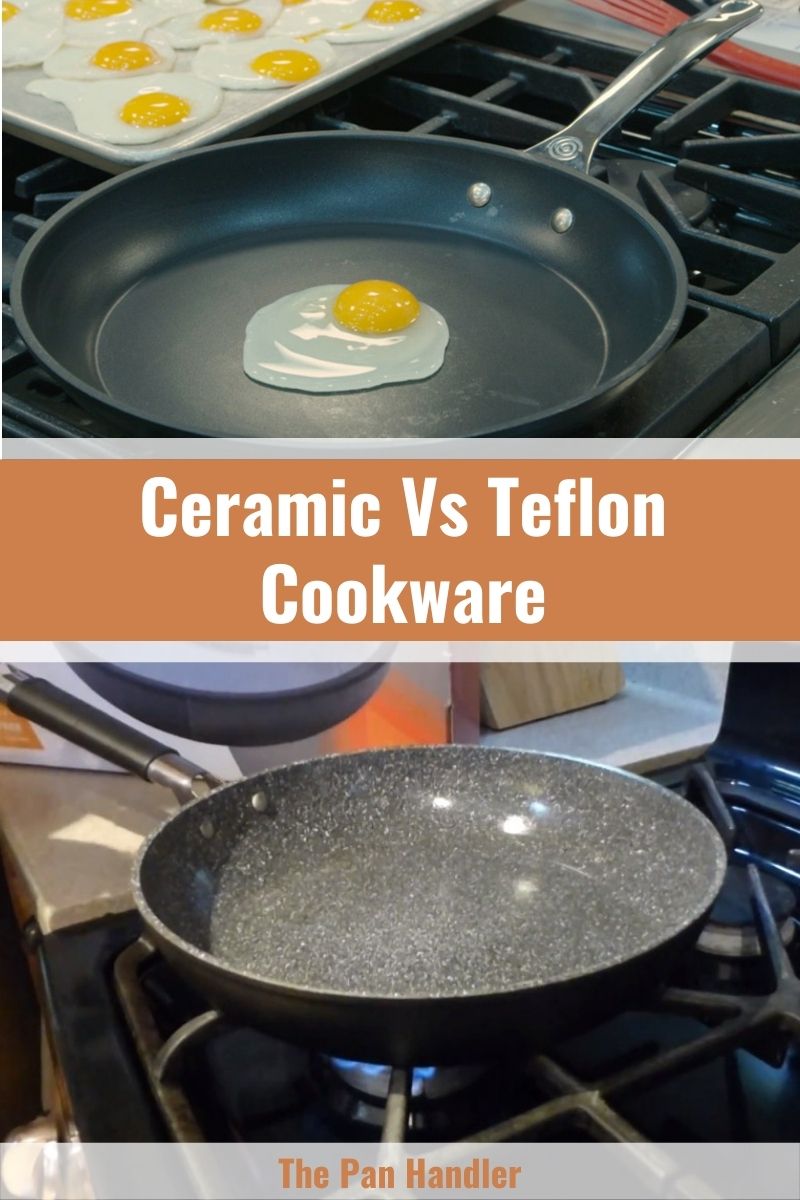Items in the same category can offer similar functions but possess completely different features and characteristics. It is like the iPhone users versus Android users who have their own preferences. The same goes for cookware. One of the most talked-about concerns regarding kitchen materials is the ceramic vs. Teflon topic.
Ceramic vs. Teflon
The ceramic cookware and Teflon cookware have fair differences in characteristics, but they both fall in the kitchen cookware category. They are also well-known to be a type of cookware that is non-stick, which most people prefer to use when they cook.
Take a look at the comparison table below to help you decide which one you need or prefer the most:
| CHARACTERISTIC | CERAMIC | TEFLON |
|---|---|---|
| Durability | Up to 5 years | More durable |
| Performance | Occasional sticking | Excellent non-stick |
| Price | Expensive | Cheaper |
| Safety | Varies by manufacturer | PFOA-Free after 2013 |
| Maintenance | Not dishwasher/oven safe | Similar to ceramic |
Ceramic
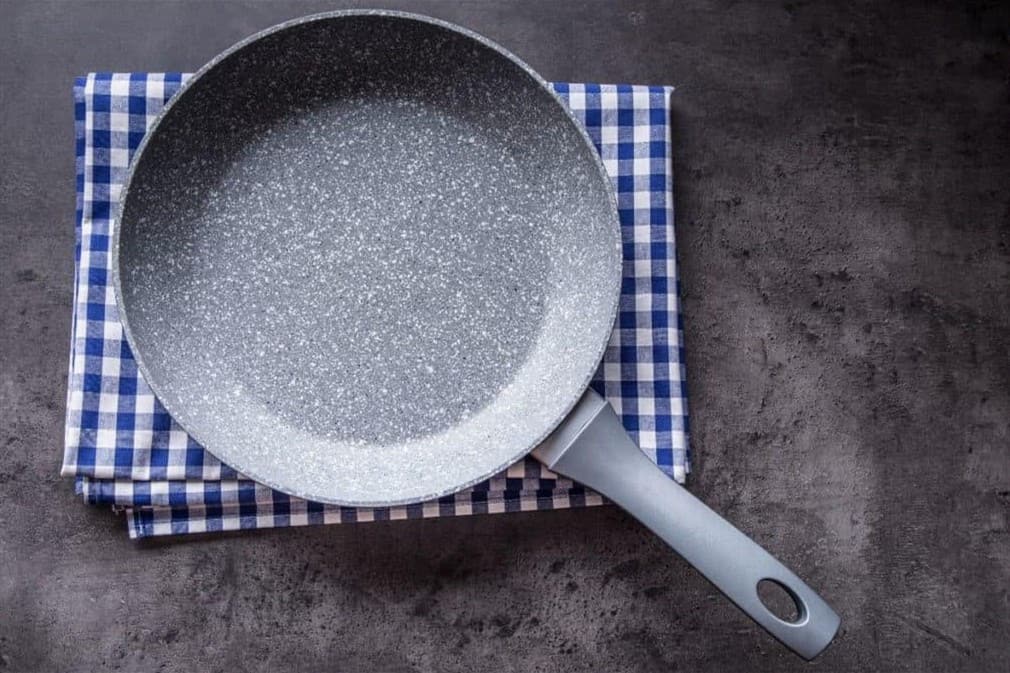
Though it is named ceramic cookware, it does not necessarily mean that its entirety is made from ceramic material. Ceramic cookware is metallic cookware made of aluminum or steel, which is only coated with ceramic. The ceramic coating is made out of mineral-based blends and inorganic minerals such as oxygen and silicon.
Ceramic cookware is well known for its non-stick properties. In line with this, it makes the ceramic cookware easier to clean than the rest. You can wipe the stains away even with hot water and soap only.
Moreover, it is known to be a great heat conductor. But despite this, it takes a little while to heat up.
If you want to flaunt your cookware to your guests, this is the perfect cookware for you as it comes in various aesthetically pleasing colors.
Moreover, it is also safe to cook alkaline and acidic food using this type of cookware because it is non-reactive at, and at the same time, it is safe for you to use this with your induction cooktop.
However, despite all the advantages, it also has disadvantages that can be non-negotiable for you. Ceramic cookware tends to be heavier than the others because of the multiple additional layers of the ceramic coating. It is also sensitive and fragile because it quickly gets scratched and possibly chips off when not handled with care.
It also has a shorter lifespan than the other cookware types due to its sensitivity and flimsiness. Although it is highly recommended to purchase from reputable manufacturers and retailers to ensure safety, it still lacks safety studies to prove its claim that the ceramic coating is non-toxic when indirectly ingested.
Take a quick look at the summarized table below to learn the advantages and disadvantages of ceramic cookware:
| ADVANTAGES | DISADVANTAGES |
| Non-stick | Heavier compared to some cookware |
| Easy to clean and low maintenance | Sensitive |
| Great heat conductor | Takes a while to heat |
| Aesthetic and colorful | Fragile |
| Non-reactive to acidic food | Less Durable |
| Safe to use for induction | Lacks safety studies |
Teflon
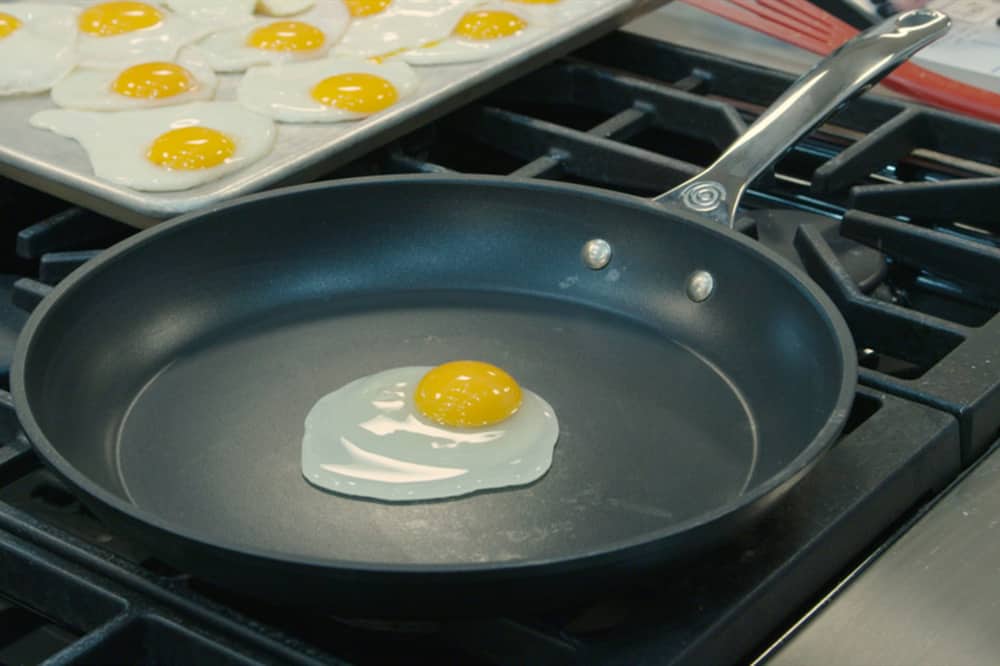
Another non-stick type of cookware is Teflon. The term is actually the name of the brand that creates the PTFE substance. PTFE stands for Polytetrafluoroethylene. This material is used to coat certain metallic cookware. Teflon is made of fluorine and carbon atoms. It is a synthetic chemical used to coat a pan to provide its non-stick properties.
Teflon cookware is the most famous type of cookware that is non-stick. It is less expensive than ceramic cookware and does its purpose just the same. Despite it being cheaper than most cookware, it is still sturdy and somehow durable compared to ceramic cookware.
Moreover, it is easy to clean because its non-stick surface makes it smooth. It is also best for people who prefer a healthy lifestyle because cooking in Teflon cookware will not require much butter and oil.
However, despite having multiple advantages, it also has its set of disadvantages. It is not recommended that you use metal utensils while you cook. The same goes for abrasive pads or hard-bristled brushes for cleaning, as they can cause severe damage to the coated surface. Hence, it is also sensitive cookware.
In addition, it is not safe to use in a dishwasher and oven. And it also takes a little while before it reaches its heat point.
| ADVANTAGES | DISADVANTAGES |
| Non-stick | Not metal utensils friendly |
| Less Expensive | Easily damaged when you use abrasive pads or hard-bristled brush for cleaning |
| Easier to clean | Not dishwasher and oven safe |
| Less use of butter and oil | Not a good heat conductor |
How to Clean Ceramic and Teflon Cookware
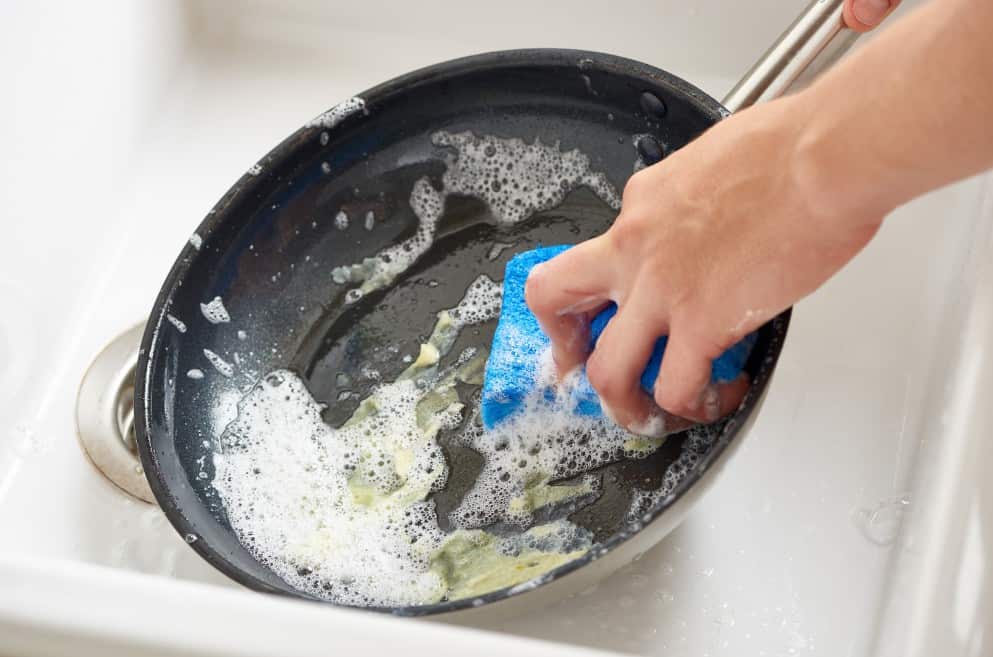
It is essential that you learn how to properly clean your nonstick cookware because it is one of many reasons why it can last for a long time. This isn’t like ordinary pans where you might be less cautious about cleaning.
The steps are straightforward, making it easy to familiarize yourself with cleaning ceramic and Teflon cookware properly.
Steps on how to properly clean ceramic cookware
- It is not advisable to let your ceramic cookware experience an abrupt temperature change as it can cause gradual damage. Make sure that you let it cool down first before submerging it in a basin filled with water or let running water fill it.
- Create a solution by mixing warm water with dishwashing liquid and using it to clean the ceramic cookware utilizing a sponge or any dishcloth.
- Wipe both the interior and exterior of the ceramic cookware, paying special attention to the edges where food residue often accumulates.
- Rinse the ceramic cookware thoroughly with clean and running water.
- You can opt to use a paper towel or a clean dish towel to wipe it off and dry.
Steps on how to properly clean a Teflon cookware
- Ensure that you empty the pan by removing all the food scraps and oil using a wooden spatula and placing it in a plastic bag.
- Oils are tough to remove. Therefore, rinse the pan with hot water or let it soak in hot water to remove any oil residue thoroughly.
- If there is still oil residue, you can also try creating a solution by mixing hot water and white vinegar and letting the nonstick pan soak in it. Repeat the process until it is no longer greasy.
- Wash the pan with hot water and dishwashing liquid. Wipe it clean using a sponge. Remember, avoid using an abrasive brush to prevent damage to the coating.
- Rinse with water thoroughly.
- Dry it using a paper towel or a dishtowel.
3 Tips Care Guide for Ceramic Cookware
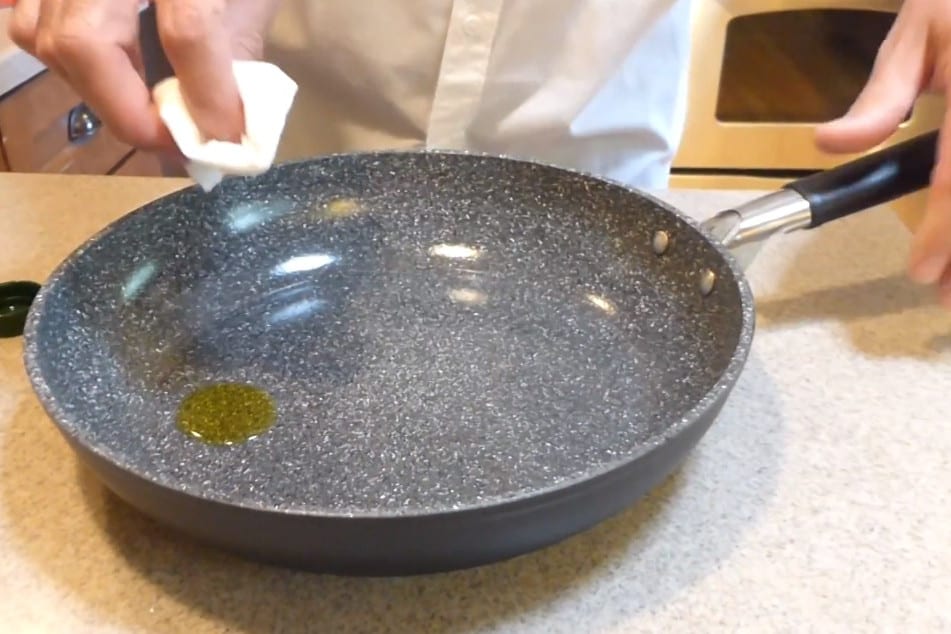
To prolong the lifespan of your ceramic cookware, you must know how to take care of it.
Practice proper heating and cooling of the nonstick cookware
Avoid abrupt temperature changes to your ceramic cookware. Ensure that you allow it to heat up slowly. The recommended heat temperature for ceramic cookware is only at low up to medium heat settings. This will help you prolong the lifespan of your precious cookware.
After use, let it cool down for a short while before submerging into the water because abrupt and extreme temperature changes will only cause damage to the ceramic coating.
Avoid using sharp utensils
Another care guide that you should always keep in mind is to avoid any sharp utensils that may scratch the coating of your ceramic cookware. Remember that this coating is what gives your cookware its nonstick property.
Therefore, only use silicone, nylon, or wood utensils for cooking and avoid abrasive pads and brushes when cleaning.
Stack and Store Properly
Though you can do this without help from a cookware protector, you may want to consider purchasing some as it is a good investment. This can guarantee you that your precious and expensive cookware will last for a long time.
3 Tips Care Guide for Teflon Cookware
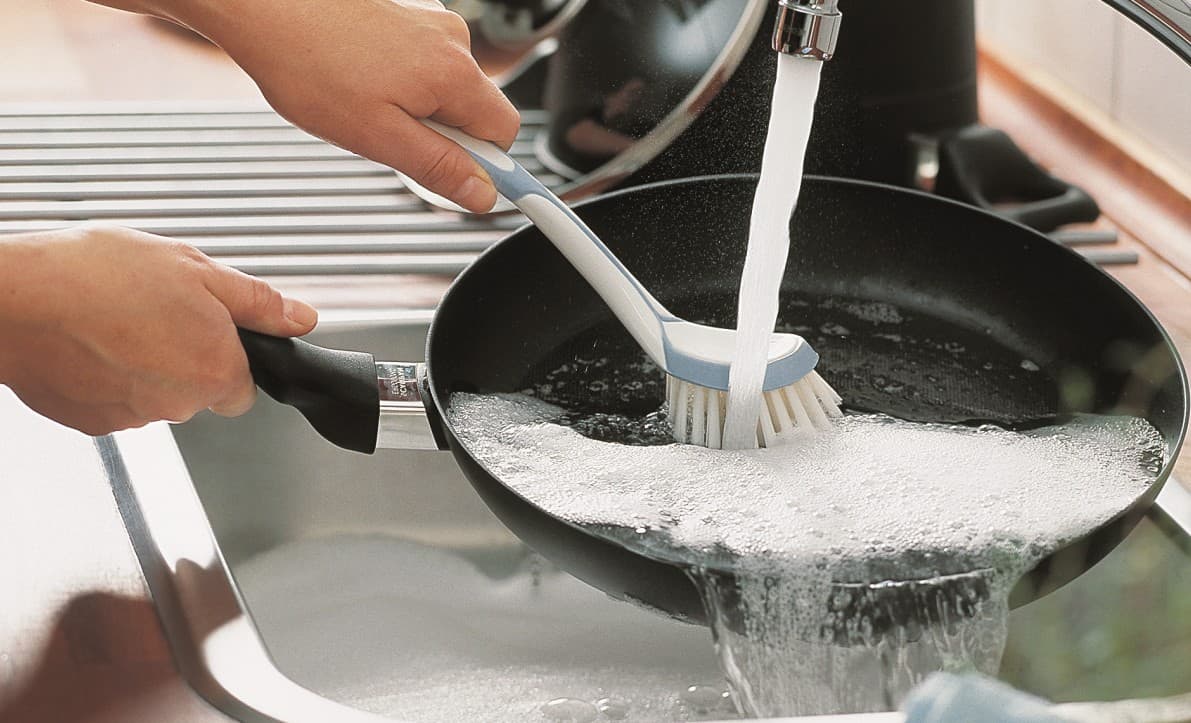
Always keep these tips in mind to ensure that your Teflon cookware will serve you through the years.
Avoid using metal utensils
It is highly not advisable to use metal utensils on your Teflon pan because it will only cause damage to the coating. Nylon, silicone, plastic, and wooden utensils are recommended.
Low to Moderate Heat Temperature
Teflon nonstick pans do not retain heat as effectively as some other materials. Therefore, it is advisable only to set the heat temperature between low and moderate.
Avoid sudden temperature changes
It is advisable to let it cool first before submerging it in water. Abrupt temperature changes will only cause your pan to warp, leading to failing cooking performance.
Summary
We now have talked about ceramic vs. Teflon cookware. We have already established their similarities and differences, which can serve as your buying guide when you are having difficulty deciding which one you should purchase. You can compare the two and choose which you prefer the most.
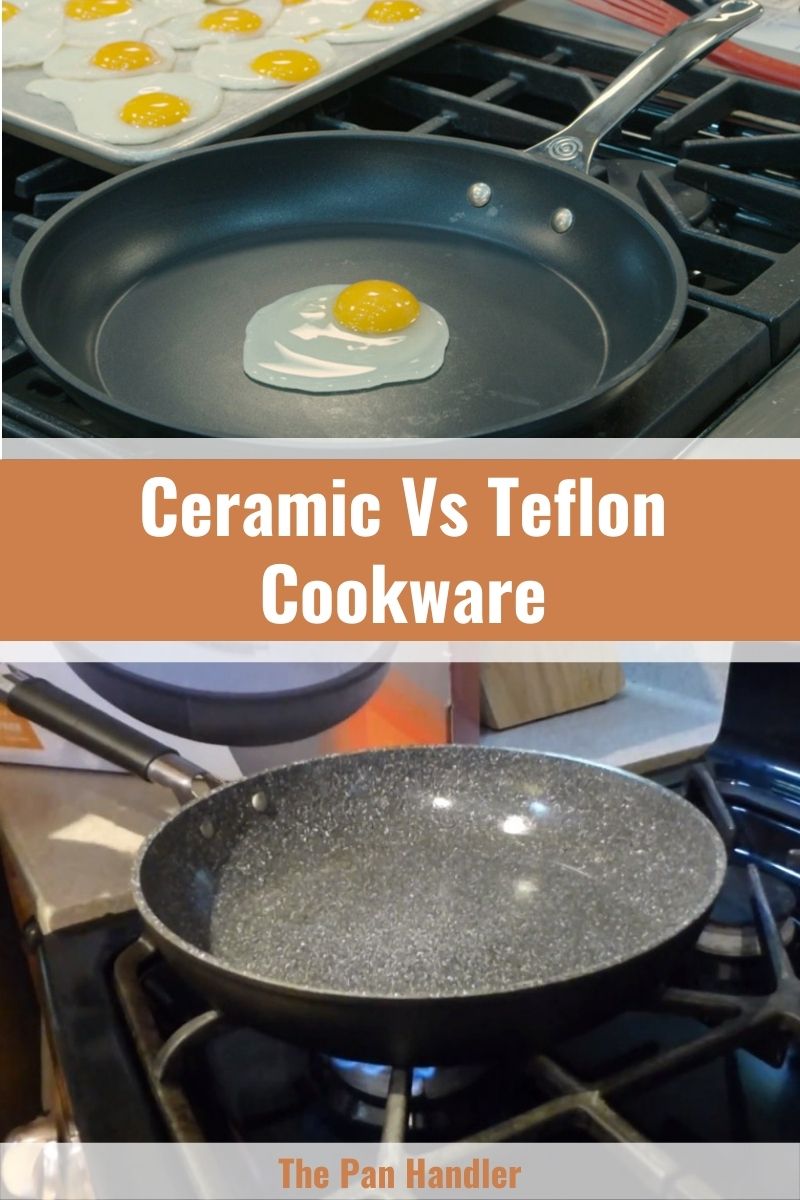

Michael Johnson is the founder of Pan Mastery, Inspired by his blacksmith grandfather’s legacy has a deep appreciation for hand-crafted pots and pans, he provides invaluable guides, reviews, and recipes to enhance your culinary journey.

